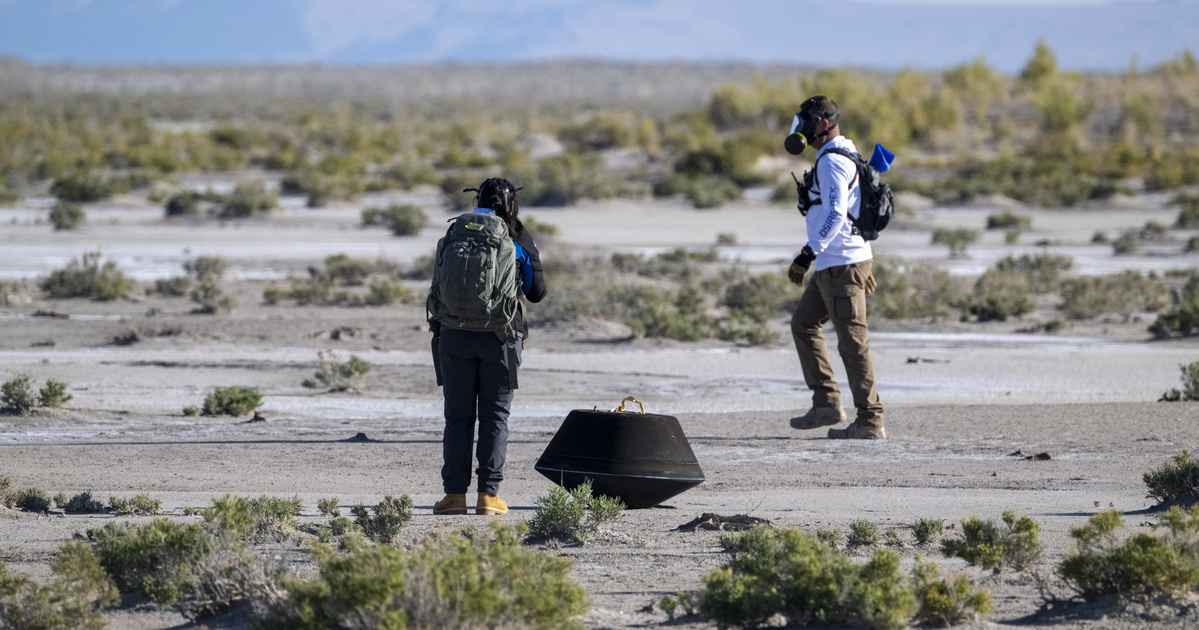As Index also wrote, NASA’s Osirix-REx mission, which brought samples from the asteroid Bennu to Earth, landed on Sunday. The 550-metre-diameter Bennu is also called a time capsule, but we asked Academician Laszlo Kiss, physicist and director of the Institute of Astronomy, why and what role galaxies could play in planetary materials research.
As he said, Bennu is a large celestial body because it consists of the cloud from which the solar system was formed in the past. Its surface is dark and rich in carbon, which may also contain fragments of amino acids. The sample taken is also important because, he said, it could show the chemical environment in which life could have first emerged.
The research probe arrived at Bennu in December 2018, mapped it with an accuracy of 30 centimeters, and two years later it approached the asteroid and took a sample of its surface with its robotic arm. This is also a major technical success, Case said, because the $800 million device mapped the asteroid’s environment for two years, whose rocky and gravelly surface made sampling difficult.
He added a kiss
It’s a carefully calculated story, not as dramatic as Bruce Willis’ “Armageddon.”
Technique, patience and time have now brought results. NASA will hold a press conference on October 11, where it will report on the returned materials. Smaller samples will be distributed to associated research groups around the world, and they hope to be able to report on a wider range of studies within two years.
We can participate in it
According to Case, perhaps within a year it will be possible to propose community-based research. By the way, our strength is discovery, finding near-Earth asteroids.
We are not directly involved in the OSIRIX mission, but it may turn out that we will receive internationally distributed samples for examination.
For example, Dr. Stephen Mojzis, from America he moved To Budapest to work on astrogeochemistry. As Laszlo Kiss tells us, Bennu is not only interesting because of the patterns, but also because it could collide with us in the year 2190. The probability of that happening is one in the year 2000, and if this calculation holds up even two years from now, then we can start thinking about an abduction. Pino. Because the collision will be an explosion with a power of 1200 megatons, which is not that small.
The mission continues, and Osirix-APEX will visit the asteroid Apophis in 6 years to take pictures of it. And on April 13, 2029, which will also be a Friday, so the superstitious will be happy, Apophis may visit us, because it will pass close to Earth, at a distance of 31 thousand kilometers. It won’t be far away until we can see its bright light with the naked eye, and the chance of impact is now estimated at 2.7 percent.
(Cover image: Inspections are performed on the sample return capsule for NASA’s OSIRIS-REx mission. The sample was collected from the asteroid Bennu by NASA’s OSIRIS-REx spacecraft in October 2020. Image: Keegan Barber/NASA/Getty Images)












































